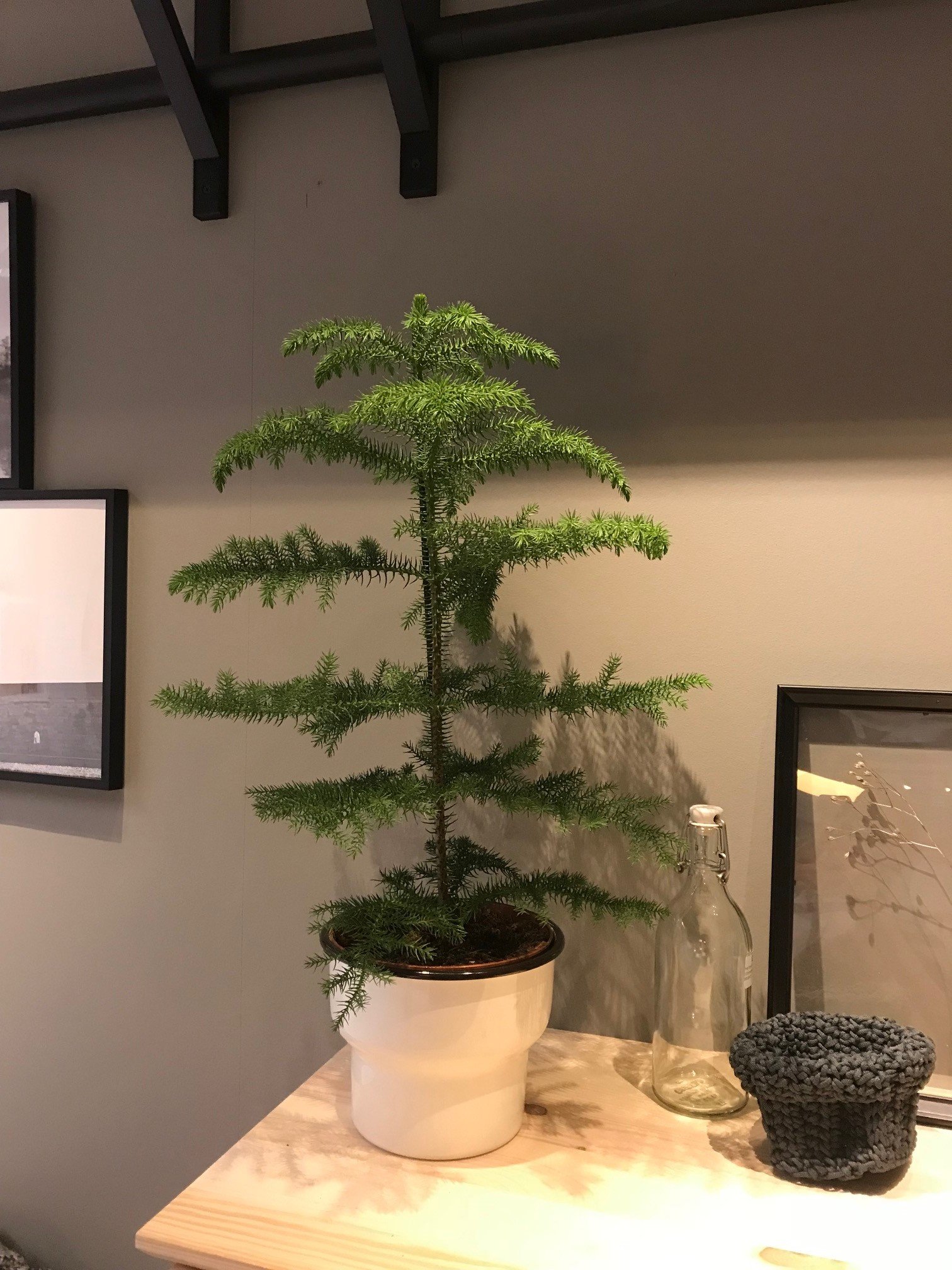
Source imageslrba.blogspot.com
Welcome to our comprehensive guide on caring for Norfolk Pines indoors. Whether you’re a beginner or experienced plant lover, this article will provide you with all the information you need to ensure your Norfolk Pine thrives in an indoor environment. With proper care and attention, these beautiful evergreen trees can bring a touch of nature and serenity to your home.
Native to the South Pacific, Norfolk Pines (Araucaria heterophylla) have become popular houseplants due to their graceful appearance and relatively easy care requirements. However, like any other plant, Norfolk Pines have specific needs that must be met in order for them to flourish. In this article, we’ll cover everything from lighting and watering to temperature and fertilizing, so you can provide the best possible environment for your Norfolk Pine.
Lighting Requirements for Norfolk Pines
When it comes to lighting, Norfolk Pines prefer bright, indirect light. They thrive in areas with a lot of natural light but should be protected from direct sunlight, as it can scorch their delicate foliage. If your Norfolk Pine isn’t receiving enough light, it may become leggy and weak. On the other hand, if it’s exposed to too much direct sun, its needles may turn brown and crispy. Finding the right balance is key to keeping your Norfolk Pine healthy and happy.
In terms of placement, consider locating your Norfolk Pine near a north-facing or east-facing window, where it can receive bright but filtered light throughout the day. If you don’t have a suitable window, you can also use artificial fluorescent lights or grow lights. Just make sure to position the lights about 12 inches above the tree and provide them with 10-12 hours of light daily.
Watering Your Norfolk Pine
Proper watering is crucial for the health of your Norfolk Pine. These trees prefer to be kept consistently moist but not soaking wet. Overwatering can lead to root rot and other issues, while underwatering can cause the tree to become dehydrated and stressed. Finding the right balance is essential.
A good way to determine when to water your Norfolk Pine is by checking the top inch of soil. If it feels dry, it’s time to water. Use room temperature, filtered water and make sure to thoroughly saturate the soil until water drains out of the bottom of the pot. Avoid letting your Norfolk Pine sit in standing water for extended periods, as this can lead to root rot.
Fertilizing Your Norfolk Pine
While Norfolk Pines don’t need excessive amounts of fertilizer, they do benefit from regular feedings during the growing season. A balanced, water-soluble fertilizer with an N-P-K ratio of 10-10-10 or 20-20-20 is ideal. Begin fertilizing in early spring and continue every four to six weeks until late summer. Always follow the instructions on the fertilizer package to avoid overfeeding, which can burn the roots of your Norfolk Pine.
Remember to scale back on fertilization during the winter months, as your Norfolk Pine will enter a dormant phase and won’t require as much nutrition. It’s best to use half the recommended strength of fertilizer or fertilize only once every two months during this time.
A Detailed Breakdown of Norfolk Pine Care
| Aspects of Care | Details |
|---|---|
| Temperature | Norfolk Pines prefer temperatures between 60-75°F (15-24°C). Protect them from drafts and extreme temperature fluctuations. |
| Humidity | These trees appreciate higher humidity levels. Mist their foliage regularly or use a humidifier to create a more suitable environment. |
| Soil | Well-draining potting mix with a slightly acidic pH (5.5-6.5) works best for Norfolk Pines. Avoid heavy or compacted soils. |
| Pruning | Regular pruning helps maintain the shape and size of your Norfolk Pine. Trim back any overgrown or leggy branches to encourage bushier growth. |
| Pests and Diseases | Watch out for common houseplant pests such as spider mites and mealybugs. Also, be cautious of fungal diseases like root rot, which can be caused by overwatering. |
Frequently Asked Questions about Norfolk Pine Care Indoors
Q: How often should I repot my Norfolk Pine?
A: Norfolk Pines prefer slightly crowded conditions, so repotting is generally only required every two to three years.
Q: Why are the lower branches of my Norfolk Pine turning brown and dropping their needles?
A: Browning and dropping lower branches is a natural part of the growth process for Norfolk Pines. It’s their way of shedding old foliage and making space for new growth. However, if the browning is extensive or accompanied by other signs of distress, it may indicate a problem with care or environment.
Q: Can I place my Norfolk Pine outdoors during warm months?
A: Yes, Norfolk Pines will benefit from spending time outdoors in a shaded area during the warmer months. Just make sure to acclimate them gradually to prevent shock from sudden changes in temperature or light.
Q: How can I propagate Norfolk Pines?
A: Norfolk Pines can be propagated from seed or by taking cuttings. However, note that propagation can be a lengthy process and not always successful. It’s best to start with small established plants from reputable nurseries.
Q: My Norfolk Pine leaves are turning yellow. What could be causing this?
A: Yellowing leaves on a Norfolk Pine are often a sign of overwatering, underwatering, or nutrient deficiencies. Adjust your watering routine and consider fertilizing if needed. Ensure that the soil is well-draining and not too compacted.
In Conclusion
Caring for your Norfolk Pine indoors can be a rewarding experience that brings a touch of nature to your living space. By providing the right lighting, watering, and environmental conditions, you can help your Norfolk Pine thrive and grow into a beautiful, healthy tree. Remember, each element of care, from light to fertilization, plays a vital role in the overall well-being of your plant. With patience and attention, your Norfolk Pine will bring joy and beauty to your home for years to come.